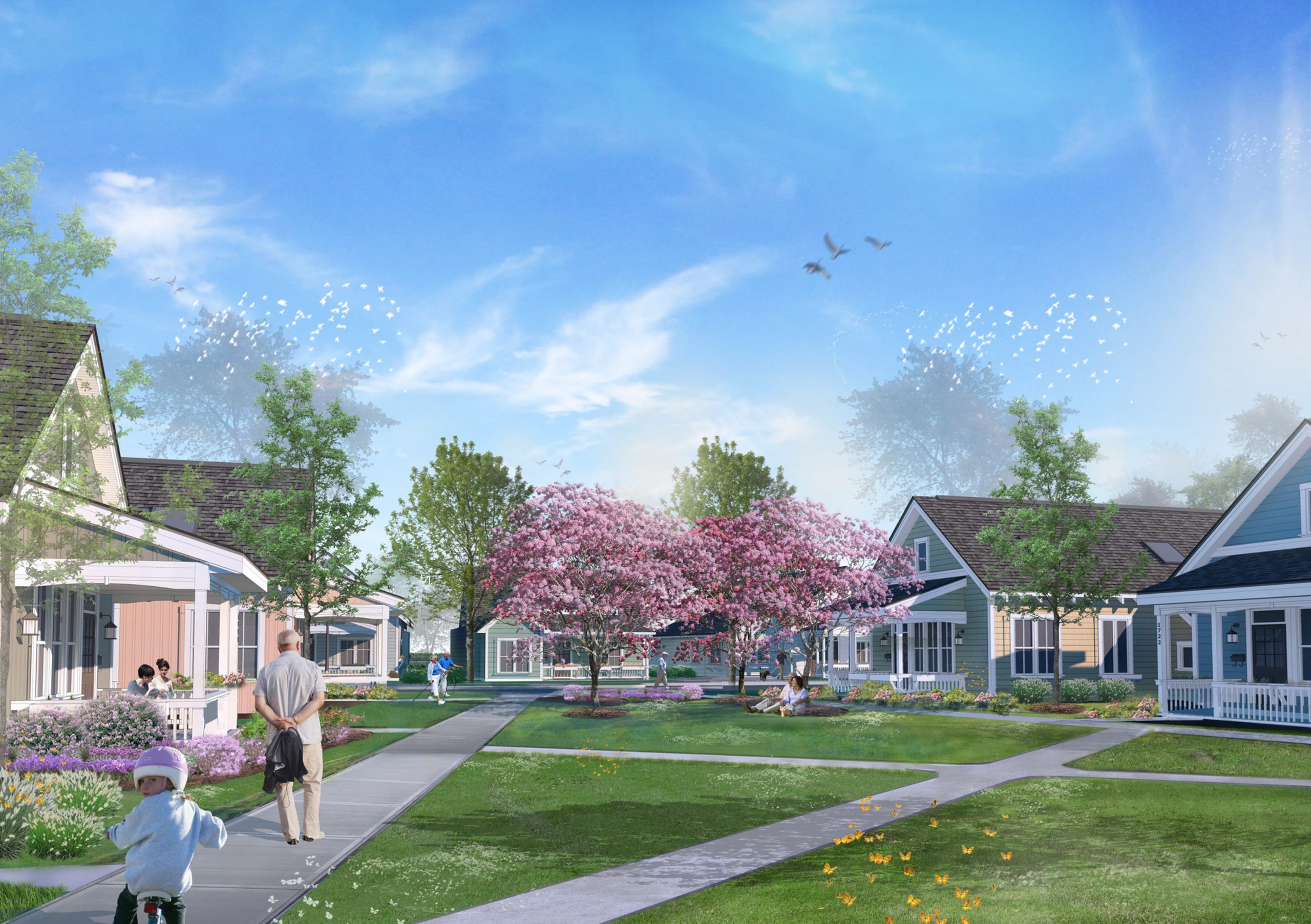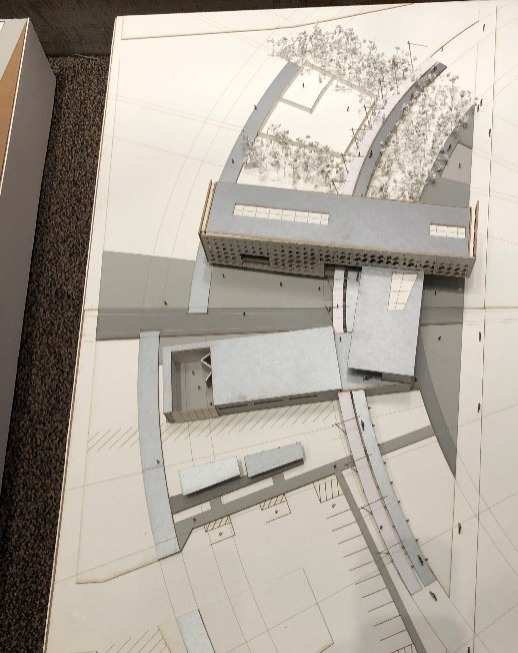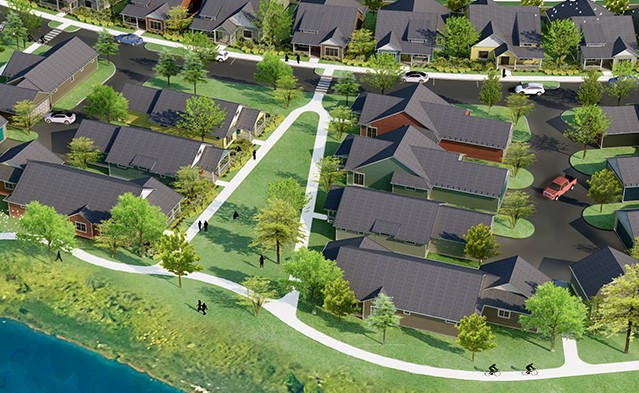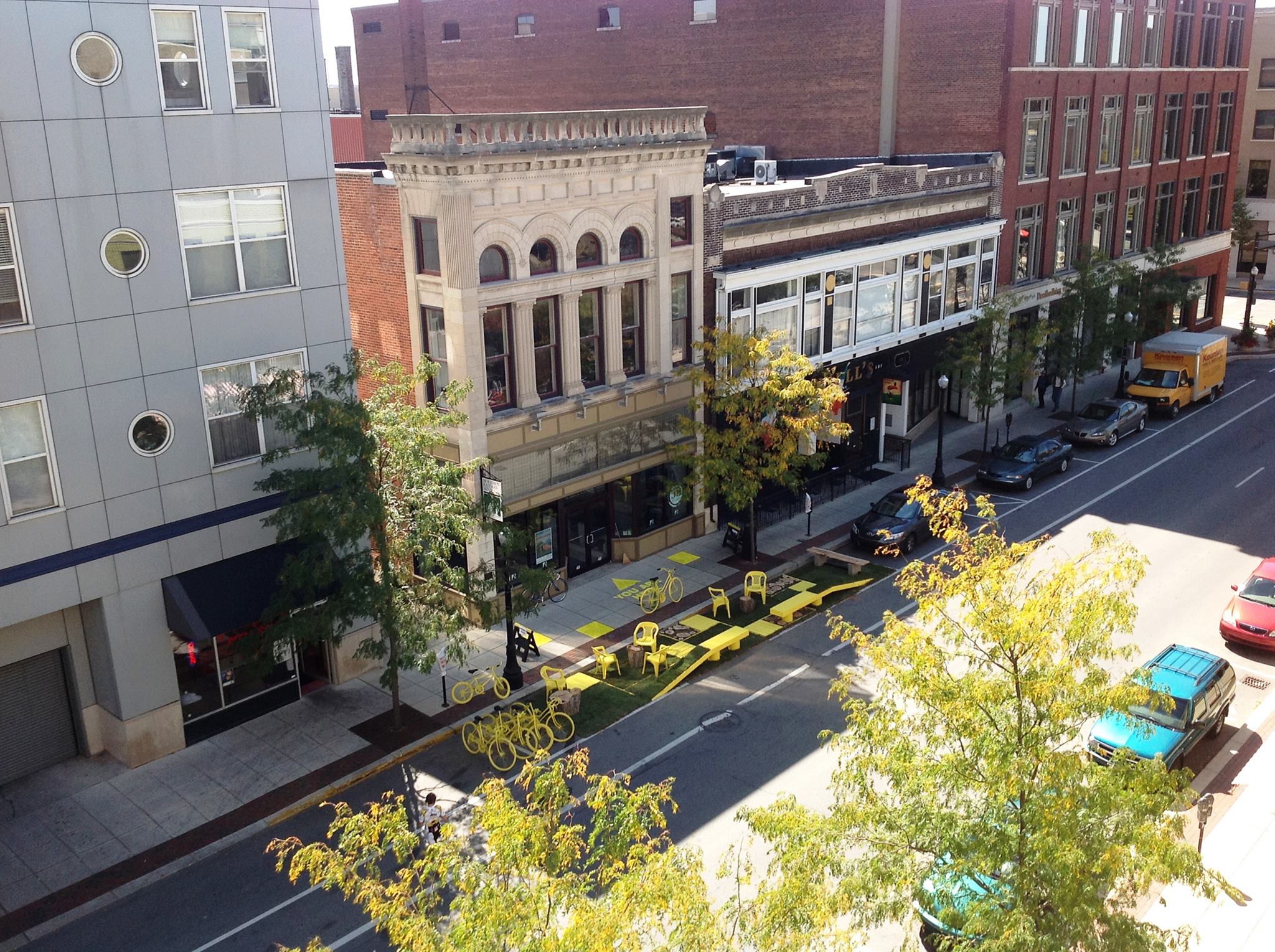MKM was named one of the “Top Healthcare Architectural Firms” in the U.S. by Modern Healthcare magazine for the 13th consecutive year.

The American Dream has, in some form or another, always had a romantic relationship with our sense of privacy. Unlike our European counterparts, whose governance structure is intended to protect the shared “commons,” the way in which we have built our communities has been to traditionally protect the pursuit and management of private endeavors – most notably, private property. It is a strategy that has refined our perception of successful living into a growing infatuation with privatization. The more things we can privatize (home gym, home office, home theater, etc.) the more successful we assume to be. It’s an odd notion that has had direct impact on our well-being.
The way in which we have planned and built communities has hinged on our instinct to confuse isolation with independence. As our ability to interact with others is systematically reduced by the environments in which we live, so is our perceptions of trust, dignity, and happiness. In order to create meaningful places for people of all ages and abilities, we need to appreciate how cooperation can serve as a metric for resilient neighborhood development. It’s a notion that is revolutionizing senior living across the country and one that is setting the stage for an innovative retirement option here in northeast Indiana.
The Value of Trust
Cooperation isn’t necessarily an exercise in morality left strictly for the good-natured. It’s a fundamental part of nature. The psychologist Steven Pinker notes that, “Commerce, trade, and exchange make other people more valuable alive than dead and mean that people try to anticipate what the other guy needs and wants. It engages the mechanisms of reciprocal altruism, as the evolutionary biologists call it, as opposed to raw dominance.”
This notion of reciprocity is how we define our self-worth. It’s where we add value and build relationships. However, to create these cooperative exchanges requires repetition – the one thing modern community development patterns have made increasingly rare.
Think of the quintessential historic downtown. Quaint storefronts line Main Street while customers, both young and old, interacted with shop owners and friends. It was an efficient system where everyone went to a central location to gain access to goods and services. It’s also where we built relationships of trust over time.
Today’s model for community development is different. With the advent of virtual commerce, and the continued growth of suburban sprawl, the frequency in which we physically interact with people living and working within our neighborhood has dramatically decreased. And while these technological innovations have revolutionized the global economy, it has also reduced our ability to trust one another. Couple this with the physical limitations that continue to plague the rapidly aging Baby Boomer generation and it’s easy to see the impact isolation will have on communities in the years to come.
Loneliness isn’t simply a state of mind. It’s an emerging risk factor that has implications regarding the personal, economic, and social well-being of a growing number of people living within our communities. As John T. Cacioppo and William Patrick state in their book, Loneliness: Human Nature and the Need for Social Connection, “…chronic feelings of isolation can drive a cascade of physiological events that actually accelerate the aging process.”
Research continually supports the linkage between loneliness in older adults and declining health, citing the following outcomes as a result: 29 percent increased risk of coronary heart disease, 32 percent increased risk of stroke, 64 percent increase in developing dementia, and 26 percent increased likelihood of death.
In a recent report, Loneliness and the Aging Population: How Business and Governments Can Address a Looming Crisis, the IBM Institute for Business Value noted stated, “Loneliness in older adults is a relatively new societal issue because of the significant number of people now living longer and the continued dispersion of the extended family. Whereas a person born in 1900 had an average life expectancy of 50, most people in industrialized countries today can expect to live to 80 and beyond, with the ‘oldest of the old’ – those over 85 – growing at the fastest pace. Future solutions will require innovative thinking, disruptive organizational and business models, and the support of new technologies to adapt to the needs of a changing society.”
But what if this research was used to prioritize the well-being of marginalized populations? What if we respected loneliness as the epidemic it is and strived to create a neighborhood development model that actively works to build networks of cooperative living and social interaction for older adults? As care providers continue to explore how they will capture a larger portion of the growing market, they will ultimately find a need to understand how they can implement reciprocal relationships within the populations they serve. That’s exactly what Lutheran Life Villages is doing in northeast Indiana.
A New Neighborhood
When Lutheran Life Villages looked to develop a 12-acre site in Fort Wayne, Indiana it wanted to create a neighborhood that redefined senior living by offering a new option to aging Hoosiers. That new model is Piper Trail – northeast Indiana’s first “pocket neighborhood” for active adults ages 55 and older.
A pocket neighborhood is a planned community that utilizes a small cluster of dwelling units focused around a shared common area. Coined by architect Ross Chapin in 1995, this development strategy is aimed at promoting a sense of neighborliness between its residents by increasing the level of social interaction throughout the course of the day.
To do this, the design of Piper Trail utilizes the placement of 48 private homes around four shared common areas. Each home is modestly-sized and equipped with a front porch softening the short transition from the shared public commons to the privacy of each home. A public street runs through the neighborhood while access to individual garages are placed to the rear of the home.
“Piper Trail is designed to foster social interaction through effective placemaking,” says Dodd Kattman, principal at MKM architecture + design and lead architect for the development. “It’s an innovative concept for senior living that supports the ability to age-in-place by providing a walkable neighborhood that can provide customized care to residents as their needs change over time.”
This idea isn’t new to senior living, clustered residences surrounding a shared common space is the hallmark for the conventional skilled nursing environment. The factors that make these care environments successful are the very same variables that make pocket neighborhoods an effective model for more independent senior living environments. However, at this scale, the well-being of the individual is balanced with the quality of life of the larger group. It’s a relationship that makes a concerted effort to mitigate isolation through the promotion of social capital – a term that refers to the collective value of all social networks and the inclinations that arise from a shared desire to do things for each other – to cooperate.
Social capital is a form of economic and cultural capital in which social networks are central, transactions are marked by reciprocity, and the surrounding civic realm produces goods and services not mainly for themselves, but for a common good.
The development of social capital occurs through two basic vehicles: bonding and bridging networks. Bonding networks are close ties that help people get by. These connections are usually with family, friends and neighbors. Connections with others who are like you give you the sense that you belong, and help you get by. Bridging networks are ties that are not as strong, but that give people more opportunities. We have bridging networks with people who are different from us (in one way or another) and are members of organizations, occupations or associations that we don’t usually engage. The design of Piper Trail utilizes both networks to create a supportive neighborhood for older adults.
The key to the success of a neighborhood like Piper Trail is in its ability to empower residents to manage it on their own terms. As Elinore Ostrom, Noble Memorial Prize in Economic Science recipient, once said when discussing the need for the grass-roots management of neighborhoods, “All sorts of common problems are readily and frequently managed in sensible, virtuous, sustainable ways by local people who entirely lack the pretensions to be trained economists. However, it becomes obvious that it is often very trained experts who often undo, destroy and wreck sensible arrangements for managing commons.” This shared ownership at the neighborhood scale incentivizes social interaction and validates cooperative living as an effective tool in the development of vibrant senior living environments.
While residents surrounding a shared commons will develop a bonded network of close neighbors, civic events hosted by Lutheran Life Villages on campus (at the adjacent clubhouse) or at the numerous amenities located within walking distance will provide bridging networks where people can meet others living in the area.
“We’re excited about how Piper Trail will develop and how it has the potential to be a very resident-centered community,” said Lutheran Life Villages’ President & CEO, Alex Kiefer. “The size is big enough to where we can do things that can’t be done in smaller communities from a service and operations standpoint, but not so big that it has to be standardized in every aspect. We envision our founders naming each pocket neighborhood. As they get to know one another, we envision them creating purposes for their shared common areas that align with their interests.”
Piper Trail is redefining the focus of senior living. It’s a simple idea with a complex structure. Each house, each walkway, and each porch are carefully positioned to optimize social interaction between its residents. Each dimension is intended to support the cognitive abilities of the residents the neighborhood aims to serve. While the supportive care found in other communities will be active and available – Lutheran Life Village looks beyond these basic services and is examining how they can best react to the growing societal needs of older adults.
The concept of Piper Trail is tackling loneliness head-on, acknowledging the importance of social interaction and prioritizing the value of cooperative living.
Note: This article was originally written for Fort Wayne Magazine.
2019 MKM Third-Year Ball State College of Architecture and Planning Design Competition Award Winners

The 2019 Capstone design competition was open to BSU CAP students completing their third year in the undergraduate architectural program.


